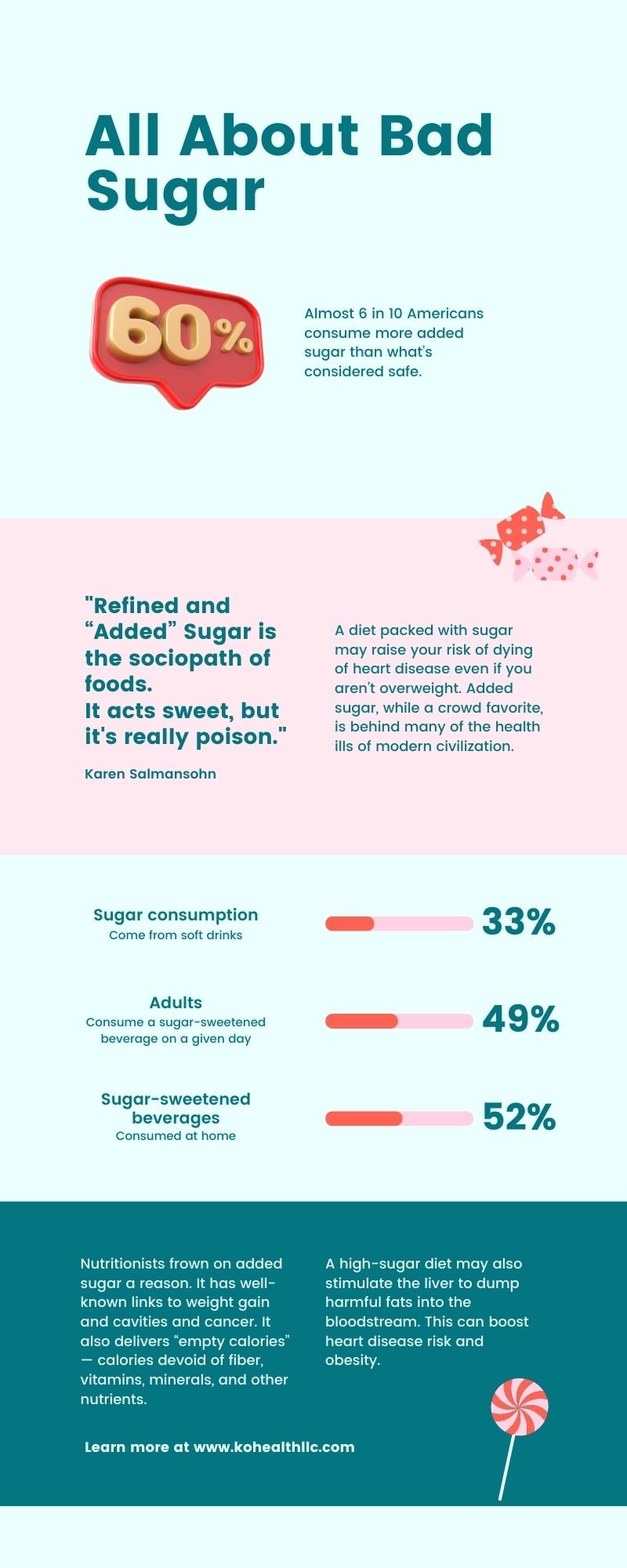D2
"Good vs Bad Sugar"
False Belief: "I can't live without sugar."
Truth: Bad sugars are turning you into someone you don't recognize.
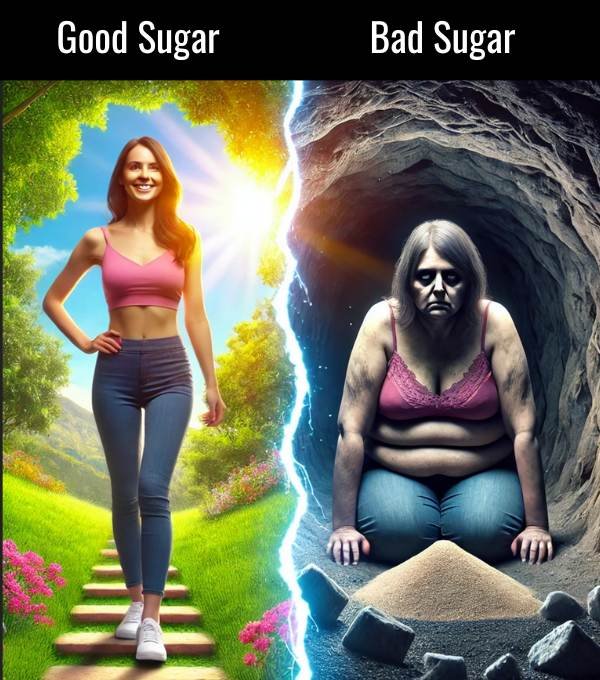
Do you ever feel like you don't recognize who you are anymore. You look in the mirror and don't know who's staring back at you. Maybe look away--can't seem to hold the gaze (don't want to).
Well, that was me not too long ago when I was addicted to sugar. I was addicted to cookies, breads, sodas, candy, and more.
It was destroying my life (literally).
My entire body was inflamed, including my face (which is a big sign of inflammation). But even worse, it made me depressed and feeling not right in my own skin.

When you're feeling this way, and get swelling and puffy in areas that shouldn't, it's a sign that you are consuming too much bad sugar and it's causing systemic inflammation.
If this persists too long, swelling develops and creates stagnation and acidity. Especially in the areas where you have most lymph nodes: neck, collarbone and armpit areas. Even in young people.
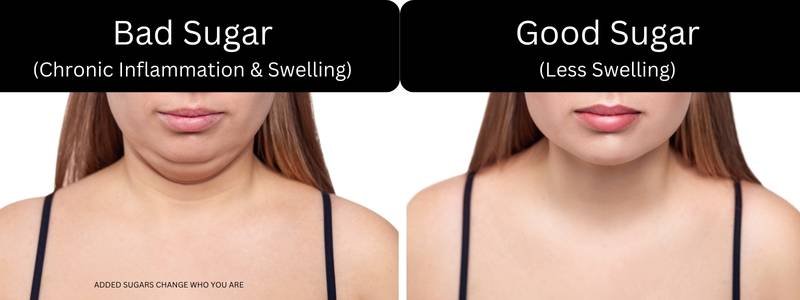
Once you replace bad sugars with the good kind, you instantly look and feel better.
It awakens your mitochondria. It energizes you and makes you want to move and walk and exercise.
Your life changes.
This is me today...

So, what are the 2 types of sugars?
Good and bad.
Bad sugar destroys our identity (literally) while the good sugar lifts us up. They're both called "sugar" when they're nothing alike whatsoever.
For adults, bad sugar reprograms the structure of our microbiome and when consumed long enough in high doses, it strangles our circadian rhythm to the point where we lose a sense of ourselves. (We become like walking zombies).
It's even more harmful for kids. If you've ever witnessed a 7-year old, that's well-behaved and sweet but turns into a raving lunatic after having just 1 piece of candy, you've witnessed this scientific phenomenon.
What are the bad sugars?
The bad sugar I'm talking about is called "Added Sugars."
These "Added Sugars" are added to our foods as a sweetener, preservative, texture modifier, fermentation substrate, flavouring or colouring agent, or bulking agent. They are man-made and have properties that can rearrange our DNA.
The good news is, these "Added Sugars" can be identified so that you can stay away from them like the plague that they are.
Here's how.
Next time you're in the grocery store and pick up a container of yogurt, take a look on the back. And go straight away to "Added Sugars"...

There is 18grams of bad sugar in this so-called healthy food. In just one six ounce serving.
It's kinda crazy.
What that's like is if you were to take a spoon and ate 18 spoonfuls of sugar, it would be the same thing.
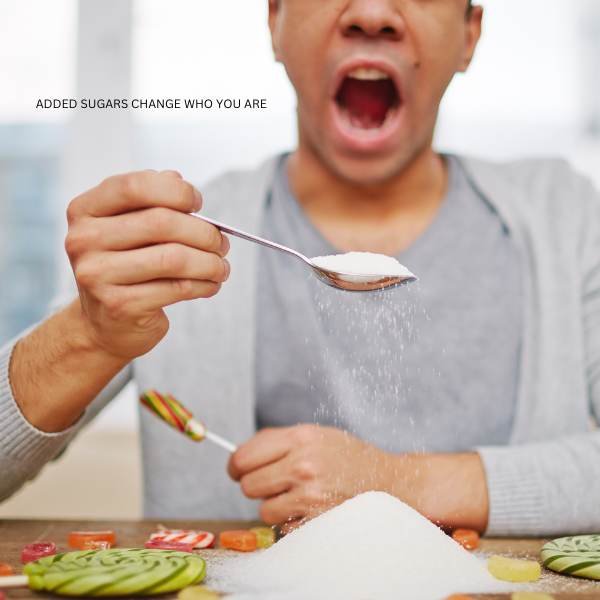
That's a lot of sugar! But the thing is... you don't realize it. The other stuff kind of masks the taste so you don't even realize you're eating that much bad sugar.
And here's another...
How much do you think is in just one glass of tea?
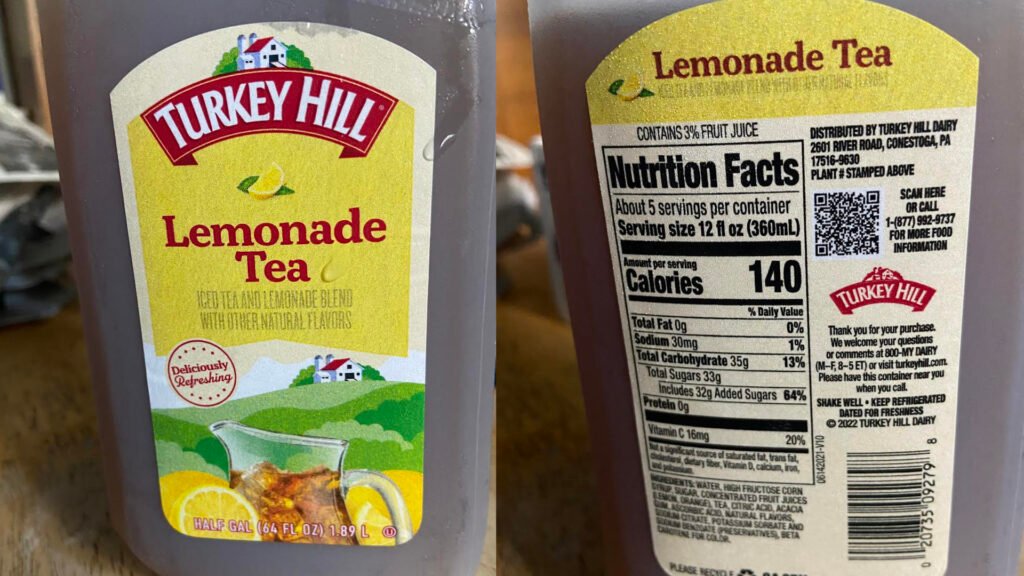
33grams of sugar in just one serving of this "Lemonade Tea."
Just one glass and you've already exceeded the daily limit.
That's kind of how the enemy works.
He disguises the bad things in seemingly good things so you can't tell the difference. But when it comes to bad sugar, there's a huge difference between good and bad sugar.
Women should only consume 25 grams or less of added sugars daily to be safe. Men, 36grams.
Anything more than that makes you vulnerable to chronic disease.
(I simply avoid anything more than one digit number of added sugar. So, if it has 10 or more grams per serving, I avoid it.)
Start reading labels and watch your authentic self thrive.
Make sure to eat enough good sugars to keep the bad sugar cravings at bay.
False Belief: "Don't eat fruit since it contains sugar. Sugar's sugar. It's the same thing."
Truth:
"Fruits contain miracle compounds that when coupled with the sugar in the fruit, turn into a serotonin boosting tool. Eating fruit is essential for curbing cravings for the bad sugars."
So what are the good sugars?
The good sugars are God-made. Any fruits, or whole food that's sweet--anything in the original form that God made is good.
Do NOT listen to the noise out there that says only eat meat. Or, that fruit will make you fat. Or, sugar is sugar no matter how you cut it.
Those are all false.
There's a difference between honey and high-fructose corn syrup. There's a difference between maple syrup and sucrose.
One can cause cancer while the other boosts serotonin and health.
Fruit, Honey, stevia, and maple syrup contain miracle compounds that heal and make you happier. Whereas high-fructose corn syrup, sucrose, dextrose, maltodextrin, and fructose can cause insulin spikes, and crashes. And is reported to cause diabetes, depression, cancer and more.
So, what do you do when your next sugar craving hits?
Reach for fruits or 70% Dark chocolate bar or baking chips, like me and Amanda (Sweetened using stevia or monk fruit is best).
Make a berry parfait.
You got this.
Replace bad sugars with the good and watch your genuine and authentic self come back.

God gave us these miraculous fruits because they contain healing compounds. Fruit is the most whole, fulfilling food on the planet.
It's just the enemy trying to pervert and trick you. But you know better now.
It's time.
Start replacing the bad with the good.
And soon, when you look at yourself in the mirror, instead of looking away not recognizing the person staring back at you, you'll gaze back with a smile that says "I'm back!"

Why Do This? Not only can you live without bad sugar, you'll thrive to new heights the instant you replace bad sugars with good.
INSTRUCTIONS:
- Track sugar intake. (aim to cut down 50%)
- Eat fruit everyday, any kind, to fulfill your sugar needs.
- Replace sugary drinks with water or tea.
- Do the Fab5 Workout today and/or go for a 10-minute walk.
Here’s a chart summarizing the five most common refined sugars used in foods, what they do to the body, and examples of foods they are found in. I’ve included scientific references in standard format at the bottom.
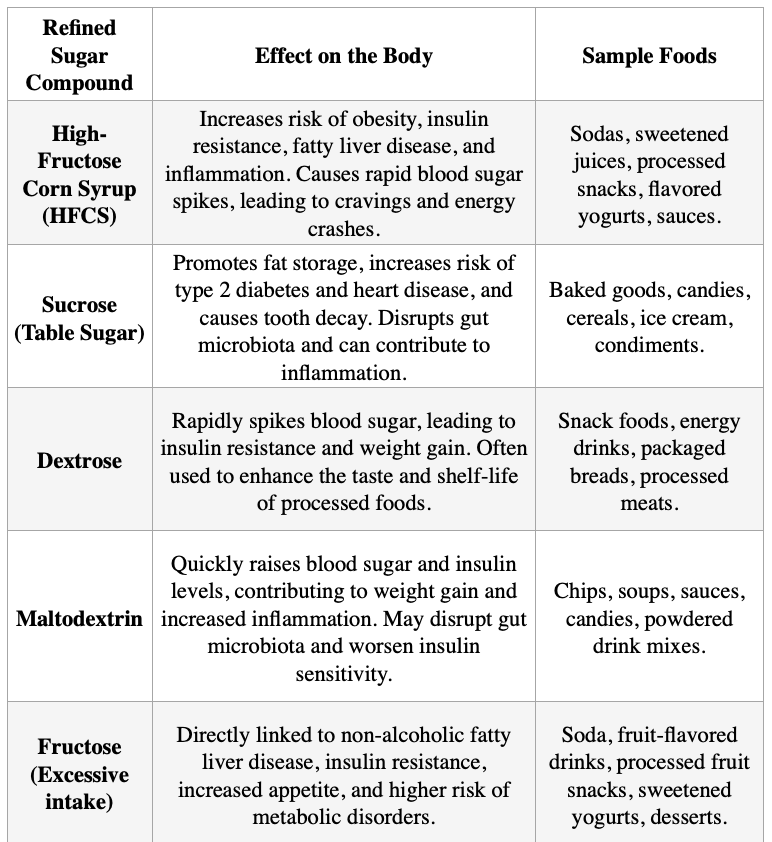
Scientific References:
- -Bray, G. A., Nielsen, S. J., & Popkin, B. M. (2004). Consumption of high-fructose corn syrup in beverages may play a role in the epidemic of obesity. American Journal of Clinical Nutrition, 79(4), 537-543.
- Malik, V. S., Schulze, M. B., & Hu, F. B. (2006). Intake of sugar-sweetened beverages and weight gain: A systematic review. The American Journal of Clinical Nutrition, 84(2), 274-288.
- Lustig, R. H., Schmidt, L. A., & Brindis, C. D. (2012). Public health: The toxic truth about sugar. Nature, 482(7383), 27-29.
- Stanhope, K. L. (2012). Role of fructose-containing sugars in the epidemics of obesity and metabolic syndrome. Annual Review of Medicine, 63, 329-343.
- Brouns, F., & Kettlitz, B. (2002). Maltodextrins and glucose syrups: structure, production and metabolism. Journal of Clinical Nutrition, 56(1), 3-9.
This chart highlights the impact of these sugars on our health and the common foods where they are found. Let me know if you'd like any further details!

This has become one of our favorite things to eat as a dessert or meal replacement!
Check In for today's session below by telling me what you liked MOST about this session and answer the question,...
"What is one belief you have that you know is limiting you, and how can you reframe it?"

